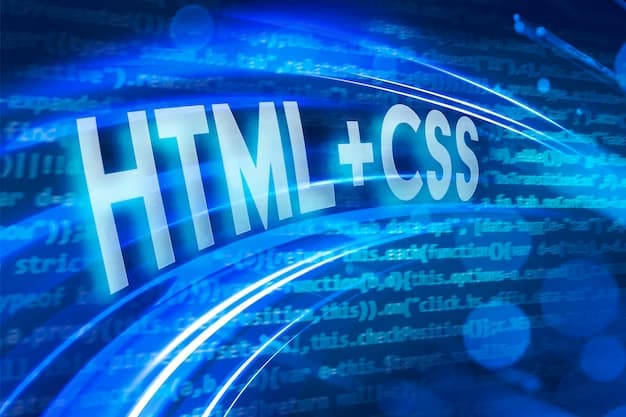
Use of HTML and CSS: Detailed Guide
Embarking on a journey into the tech world requires foundational knowledge, and learning HTML and CSS stands as a crucial step. This article delves into the significance of mastering these fundamental programming languages and the myriad opportunities they unlock in the tech industry.
Understanding HTML and CSS
HTML, or HyperText Markup Language, serves as the backbone of web development, laying the groundwork for structuring web pages. CSS, or Cascading Style Sheets, complements HTML by enhancing visual aesthetics and design elements, ensuring a seamless user experience.
5 Convincing Reasons to Learn HTML and CSS
- Understanding the Web Better: Mastery of HTML and CSS provides a comprehensive insight into the workings of web pages, empowering individuals to grasp fundamental concepts and design captivating websites;
- Creating Websites in Different Niches: With HTML and CSS proficiency, developers can craft websites tailored to various industries, meeting the diverse needs of businesses and enhancing their online presence;
- Expanding Career Options: Beyond traditional development roles, knowledge of HTML and CSS opens doors to diverse career paths, including copywriting, UI/UX design, and freelance opportunities, showcasing versatility and adaptability in the tech field;
- Offering Tailored Services to Clients: Freelance developers equipped with HTML and CSS skills can provide personalized solutions to clients, distinguishing themselves in a competitive market and delivering visually appealing websites that attract lucrative clientele;
- Accelerating Learning of Other Coding Languages: HTML and CSS serve as springboards for mastering advanced programming languages, facilitating faster learning and comprehension of complex coding concepts, laying a solid foundation for career growth.
Tailoring Services with HTML and CSS
Freelance developers armed with HTML and CSS expertise can offer customized solutions to clients, catering to unique design preferences and branding requirements. By leveraging these skills, developers can carve a niche in the competitive freelance market and build a reputation for delivering exceptional web solutions.
Learning HTML & CSS: Where to Start
Embarking on the journey to master HTML and CSS is a pivotal step toward a successful tech career. Beginners can kickstart their learning journey with free resources like coding challenges, paving the way for acquiring essential skills and practical knowledge in web development.
What Does CSS Stand For?
CSS, or Cascading Style Sheets, is a foundational language in web development responsible for styling and formatting web content. Understanding CSS is essential for creating visually appealing and user-friendly websites. Let’s delve into what each letter in CSS signifies:
| Abbreviation | Full Form | Description |
|---|---|---|
| C | Cascading | Denotes the cascading nature of CSS, where multiple style sheets can influence an element |
| S | Style | Represents the core purpose of CSS: defining styles and visual attributes of web elements |
| S | Sheets | Refers to the individual style sheets containing rules and declarations for styling |
Comparative Table: HTML vs. CSS
| Aspect | HTML (Hypertext Markup Language) | CSS (Cascading Style Sheets) |
|---|---|---|
| Purpose | Defines the structure and content of web pages. | Controls the presentation and visual styling of web pages. |
| Role | Provides the foundation for web page elements such as text, images, links. | Enhances the appearance of HTML elements by defining layout and aesthetics. |
| Syntax | Uses tags and attributes to define elements and their attributes. | Utilizes selectors and declarations to apply styles to HTML elements. |
| Example | <p>This is a paragraph.</p> | p { color: blue; font-size: 16px; } |
Importance of HTML and CSS in Modern Web Development
HTML (Hypertext Markup Language) and CSS (Cascading Style Sheets) are indispensable languages in modern web development, playing pivotal roles in shaping the digital landscape. Here’s why mastering these languages is crucial:
HTML serves as the backbone of web pages, providing structure and semantics to content. It defines the hierarchy of elements, such as headings, paragraphs, and lists, allowing browsers to render web pages accurately. Without HTML, the web would lack structure, making it challenging for users to navigate and understand content.
CSS complements HTML by enhancing the presentation and visual appeal of web pages. With CSS, developers can control typography, colors, layouts, and animations, creating immersive and engaging user experiences. By separating content from presentation, CSS enables efficient styling across multiple pages, ensuring consistency and scalability in web design.
In today’s digital age, where user experience reigns supreme, HTML and CSS play integral roles in creating responsive and user-friendly websites. From optimizing layouts for different devices to implementing interactive elements, mastering HTML and CSS empowers developers to craft dynamic and visually stunning web experiences that captivate and delight users.
Evolving Role of HTML and CSS in Web Development
As technology advances and web standards evolve, the role of HTML and CSS in web development continues to expand and evolve. Here are some emerging trends highlighting their evolving significance:
- Responsive Design: With the proliferation of mobile devices, responsive design has become a standard practice in web development. HTML5 and CSS3 introduce features like media queries and flexible grids, allowing developers to create websites that adapt seamlessly to various screen sizes and resolutions;
- Accessibility: Ensuring accessibility for all users is paramount in modern web development. HTML provides semantic elements like <header>, <nav>, and <main>, enhancing accessibility and usability for screen readers and assistive technologies. CSS enables developers to implement accessible design patterns, such as high contrast modes and keyboard navigation, fostering inclusivity and usability.
As HTML and CSS continue to evolve, developers must stay abreast of emerging trends and best practices to create innovative and accessible web experiences that cater to the diverse needs of users worldwide. By embracing the dynamic nature of web development and mastering HTML and CSS, developers can drive positive change and shape the future of the digital landscape.
Conclusion
Mastering HTML and CSS unlocks a myriad of opportunities in the tech industry, from creating captivating websites to pursuing diverse career paths. By embracing the fundamentals of web development, individuals can embark on a rewarding journey filled with learning, growth, and endless possibilities.

